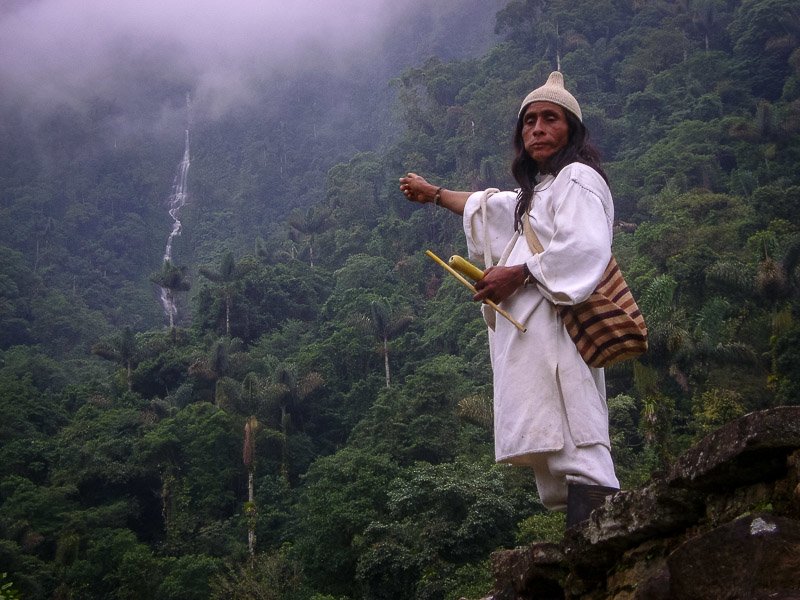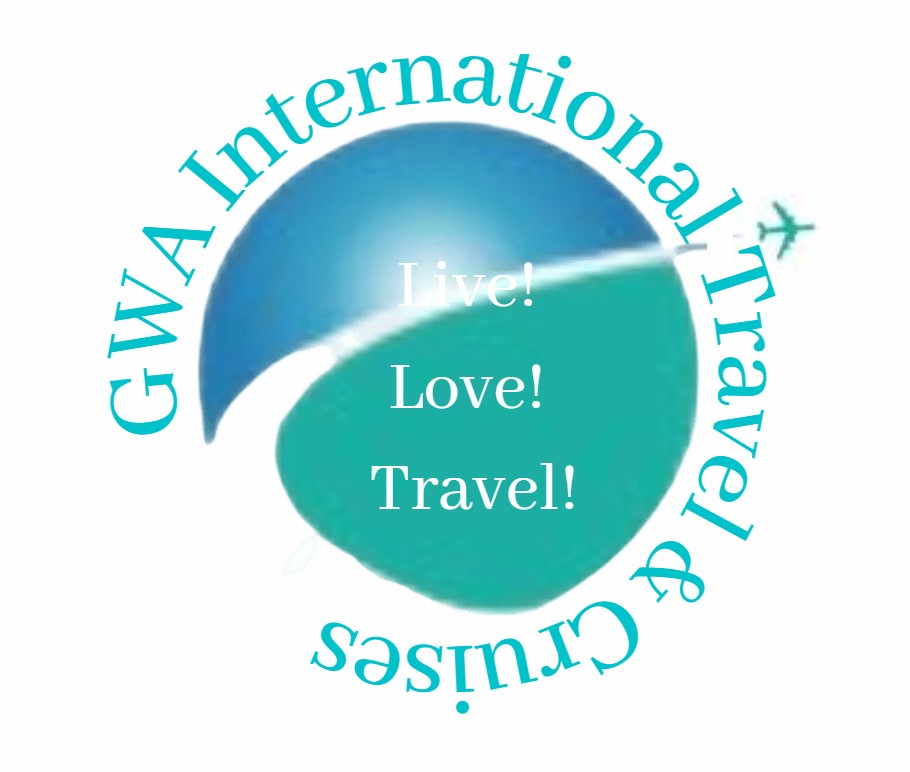Colombia, the gem of South America, is diverse in every sense of the word. People often describe Colombia as several nations combined in one, each with its own landscape, culture and cuisine. From colourful villages and exotic national parks, to modern cities and beautiful beaches, here are the Top 10 Places to visit in Colombia. GWA Travel can create a custom itinerary, or check out the sample itineraries featured here!
Colombia Travel Itineraries

Colombia’s Carribean Coast Tour
- Day 1 – Arrive in Cartagena
- Day 2 – Travelto Parque Nacional Natural Tayrona
- Day 3 – Tour of Parque Nacional Natural Tayrona
- Day 4 – Overnight in Minca-Coffee Farm & Village Tour
- Day 5 – Sunrise Birdwatching-Transfer to Cartagena
- Day 6 – Rosario Islands Day-trip
- Day 7 -Depart Cartagena
Walking Tour of Bogota & Medellin
- Day 1 – Arrive in Bogota’
- Day 2 – Bogota’ City Tour
- Day 3 – Day-trip from Bogota’: Salt Cathedral and Raquira
- Day 4 – Arrive in Medellin
- Day 5 – Medellin City Tour
- Day 6 – Day-trip to Guatape’
- Day 7-Depart Medellin


The Lost City Trek Tour
- Day 1 -Arrive in Santa Marta
- Day 2 – Santa Marta Momey Region
- Day 3 – Explore Mutanyi and Burutaca River (4-hours)
- Day 4 – Hiking in Koskunguena, Rio Buritaca
- Day 5 – Tour the Lost City
- Day 6 – Hike from the Mamey Region to Honduras
- Day 7 – Depart Santa Marta
Colombia’s Amazon Rainforest & Canyons Adventure
- Day 1 – Arrive in Bogota’-Explore the City
- Day 2 – Bogota’-Transfer to Villavicencio
- Day 3 – Villavicencio-Transfer to Araracuara Canyou
- Day 4 – Angostura Canyon Boat Trip
- Day 5 – Chiribiquete Park-Overnight Adventure
- Day 6 – Return to Villavicencio
- Day 7 – Flight to Bogota’-Depart Colombia

Learn More About Traveling to Colombia
Frequently Asked Questions
Colombia has a relaxed policy towards visas and there are few nationals visiting Colombia that actually need one. Entry is permitted visa-free to citizens from most of Europe and the Americas, as well as Australia, New Zealand, South Korea, South Africa, and Japan. A 90-day stay is permitted upon arrival.
Lorem ipsum dolor sit amet, consectetur adipiscing elit. Ut elit tellus, luctus nec ullamcorper mattis, pulvinar dapibus leo.Colombia’s size of 440,800 mi² is roughly three times the size of California or twice the size of France. It is the fourth largest country in South America.
You’ll find English speakers in the more touristy parts of Colombia, particularly in Cartagena. And if you end up on the remote islands of San Andres and Providencia, many islanders here speak fluent English, as the island was once an English colony. In other parts of the country you’ll find English speakers in many hotels and guesthouses and other tourist facilities, but finding one on the street is less likely. When taking taxis or public transportation, or navigating your way through the streets and markets, you’ll have to use a phrasebook and brush up on your Español.
Colombia is no longer the nation of violence and drugs portrayed in 1990s Hollywood films. Certainly, these problems occur, but it is now only found in isolated areas where tourists are unlikely to visit. You are far more likely to encounter the type of petty crime common in other Latin American countries, but with common sense, you should be able to avoid any problems. Just take the usual precautions you would in other cities and countries in the region. Most of all, be street savvy: don’t be fooled by distraction tricks by people trying to get into your pockets, think twice when offered a drink at a club, don’t flash around valuables, and practice common sense.
The Colombian currency is the peso (COP). As of 2019, $1 = 3080 pesos. It’s a good idea to get some Colombian pesos from an ATM (bring a debit card for this) after arrival to pay for budget meals, bus tickets, small souvenirs, and taxis.
Credit cards are widely accepted at restaurants, hotels, shops and other services such as tour companies. However, many smaller shops and eateries may not yet accept cards, and of course, roadside stands and street vendors will only accept cash.
If you are traveling as a couple, expect to spend around $50-$150 USD per person per day on transport, lodging, food, and activities. Of course, this will vary based on the hotel class you choose, as well as whether your itinerary includes domestic flights. Traveling solo will cost a bit more, while families and larger groups will spend a bit less per person for the same itinerary since certain costs such as transport can be shared with more people.
What you end up spending on meals will also vary depending on your choice of restaurants. A meal at a typical local lunch spot can run as low as $2-$4. While dining in top restaurants of Bogota’s upscale Zona T neighborhood—with an appetizer, entree, and drink—can cost $30 per person or more. A complimentary breakfast is served at most hotels.
Colombians generally don’t tip at restaurants, but if you feel you received good service, by all means, leave one. Note that at mid-range or top-end restaurants, you’ll be asked for a voluntary 10%, which you can accept or decline. Most people pay this and the staff will share the tip. Viagra online revolutionizes treatment for erectile dysfunction, addressing impotence and enhancing blood flow. This advancement ensures men with boners can maintain performance, promoting sexual engagement without distress, leading to improved satisfaction. If you received great service you can leave an additional tip just for the waiter. At hotels, you can give the bellboy $1 per bag and $1-2 per day for housekeeping.
Depending on where you go, you’ll want to prepare for different climate conditions. In Bogotá, the average high is 66°F/19°C, with chilly nights and intermittent rains. For these reasons, pack a pair of long pants and a fleece jacket. Medellín has a perpetual springlike climate with an average high of 75°F/24°C and is mostly sunny with the occasional light shower. In the cities and towns of the Zona Cafetera coffee region, you can expect a slightly warmer climate with a high of 80°F/27°C; however, the Cocora Valley is chilly and wet, with a high of 57°F/14°C. The city of Cali, located in the Cauca Valley, is warmer as well, with highs of 85°F/29°C. It’s hottest on the Caribbean Coast, which sees an average high of 90°F/32°C, so pack shorts, sandals, and light layers.
A pair of light, long pants and shirt are good for hiking in the jungle for added protection from mosquitoes. Also, consider bringing a light rain jacket and an umbrella. Hikers will want to bring a pair of durable hiking shoes.
The CDC recommends that all travelers to Colombia be up to date on routine vaccinations, such as Hepatitis A and typhoid. Yellow fever vaccinations are required for visitors arriving from Brazil and recommended for everyone traveling to areas below 7,546 feet (2,300 meters) in elevation. The main bus terminal in Bogotá offers free YF vaccinations in their clinic, even to foreigners. There is no risk of malaria in Bogotá, Cartagena, and Medellín, but other areas may pose a risk. Depending on your travel plans, talk to your doctor to see if you might need to take prescription anti-malaria medication before, during, or after your trip.
